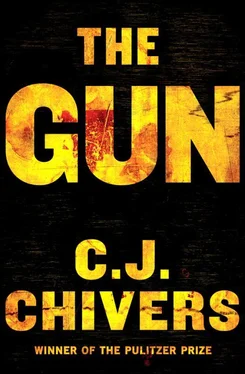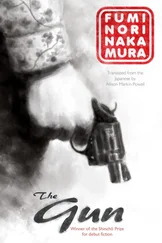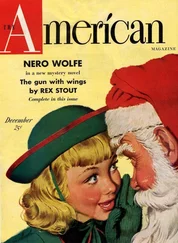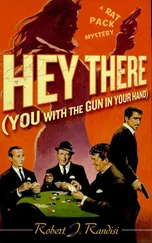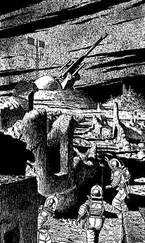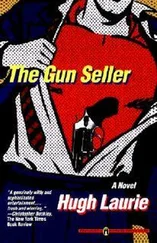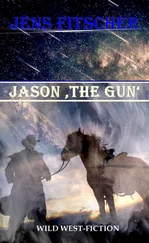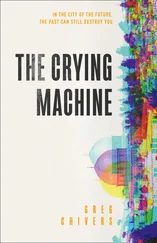Look is important to Kalashnikovs. In their march from secrecy to ubiquity Kalashnikovs have become more than weapons. They have become symbols—first of the industrial success of Stalin’s Soviet Union and the socialist way, later of popular insurrection, armed liberation, and gangland stature, more recently of jihad. A Kalashnikov can be appropriated for most any cause. An AK-47 with bayonet attached appears on the flag of Mozambique; it shares that flag with a hoe and a book, as if it were one of a young nation’s foundational tools. Another Kalashnikov-like rifle, held aloft by a defiant fist, adorns the emblem of Hezbollah. Here its meaning is different. The flag is not about victory, not yet. It’s about the fight. In Hollywood the Kalashnikov suggests the bad guy, the lunatic, the connoisseur tough. “AK-47—the very best there is,” the actor Samuel L. Jackson said in one of his well-known roles. “When you absolutely, positively got to kill every motherfucker in the room.”
These mixed meanings make a potent brew. The Kalashnikov stirs feelings, for and against, and the savvy have learned to tap its many meanings for their own purposes. In Missouri in mid-2009, when Mark Muller, the owner of a car dealership, wanted to generate interest and lift flagging sales, he offered a voucher for an AK-47 with the purchase of every pickup truck. The offer was a gimmick. True AK-47s cannot be legally owned by most people in the United States, and the dealership offered a coupon worth only half the price of the semiautomatic version sold in American gun shops. Once again, as is often the case in conversations related to the Kalashnikov, facts did not matter. Nonsense prevailed. Muller’s sales promotion generated international attention: A broadcast team from Al Jazeera turned up, as did another from Russian state television news. The coverage triggered old arguments. What does this weapon mean? Is it the sinister product of sinister forms of government, set loose on the world via dark processes that were, and often remain, all but unchecked? Or does its reliability and simplicity make it a symbol of the virtue of our best tools, a companion to the utility of a well-performing pickup truck? Muller was pleased. He appeared before the cameras brandishing a Kalashnikov in its semiautomatic form, enjoying free publicity while spurring business and tweaking the anti-gun crowd at the same time. Like many a man who has used a Kalashnikov, he held up his rifle for the cameras and grinned—the rascal’s pose. The Kalashnikov was put to yet another use.
Several declarations are necessary.
First, a matter of classification: For the purposes of this book, the Kalashnikov series includes the original forms and common descendants of the AK-47, including the AKM, the AKS, the Chinese Type 56 and North Korean Type 58, the Type 68, the East German MPiK, the Hungarian AMD, the Polish PMKM, the Egyptian Misr and Iraqi Tabuk, the Yugoslav M70, the AK-74, and a host of other derivatives and copycats. These rifles are commonly—although incorrectly—lumped together and referred to as the AK-47 by many commentators. To be precise, the actual AK-47 was an early model in the line and is not nearly as widespread as the varieties that followed. But the name has become, in public discourse, a shorthand for an entire family of arms. This work also examines, to a much lesser degree, the original and follow-on forms of the RPK (a light machine gun that closely resembles the AK and is often mistaken for it), the PK (a general-purpose machine gun also designed by a team working under Mikhail Kalashnikov’s name), and the SVD (a semiautomatic sniper rifle designed by Evgeny Fedorovich Dragunov and approved by the Soviet Army in 1963; Dragunov worked in the same factory as Kalashnikov and his SVD incorporated several design features of the Kalashnikov system). Why cover these arms together? Because this group forms a system of arms created from the mid-1940s to the mid-1970s to equip the Eastern bloc. They are an interrelated bunch, often made in the same factories by the same people, and designed to be distributed and used together. They share essential characteristics—ruggedness, reliability, simplicity, and profligate mass production. And because they use only three basic cartridges, made in factories that have been tooled globally to feed these now widely distributed weapons, as a group they provide a means to examine the methods and consequences of military small-arms proliferation around the world.
Second, this book, though covering a wide expanse of time and geography, attempts a comprehensive account, not a complete account, of these weapons and their place in a larger history. There are two reasons. The first is obvious. The Kalashnikov series is a sprawling subject. No single treatment can address all of its uses. An effort of such scale would require volumes and cover much of the history of more than a half-century of ground war. To cover every weapon and step in the evolution would require more time and space than one book allows. But there were milestones along the way, and consequences that fit categories. Many of these central processes and moments can be readily described. The second reason is less obvious but an even more limiting factor. On the subject of the assault rifles made by the former and current socialist worlds, impregnable obstacles block full illumination. Important matters will remain unknown until archives are open and independent researchers are allowed to assemble honest accounts of arms plants and arming decisions in Russia, North Korea, China, and many other nations. The weapon was principally a product of secretive governments, and unpleasant facts surrounding its distribution have left governments and exporters with little incentive to share their roles openly. Further, Russia, where the Avtomat Kalashnikova originated in Soviet times, has expressed itself on the subject mostly through propaganda, which over time and through repetition has hardened into national fable. The fuller versions remain officially suppressed, lost to the combined and corrosive effects of the censors and the near chanting of half-truths and lies. Myths have risen around the weapon, as have honest understandings. Separating the two is a challenge for any researcher, particularly in a period when important state archives remain sealed and when many institutions and groups, ranging from Kalashnikov’s family to the manufacturers of the weapons that bear his name, are invested in self-serving versions that cannot be fully verified and do not appear sturdy enough to withstand scrutiny. The story of the Kalashnikov is further complicated by accounts of soldiers, activists, and journalists, Eastern and Western, pro-gun and anti-gun, whose statements often flow from legend, fancy, or, in the case of the ideologues, ulterior motives. Such distillations have been repeated so often that they can appear to the casual observer to be fact. Last, elements of the weapon’s story are difficult to assemble because of the weapon’s frequent involvement in crimes. The criminals who have used them left no archives. Many have had a marked unwillingness to discuss their work. And yet for all of these obstacles, the weapons exist in such huge quantities and in so many visible fashions that a rich history can be assembled with rigor. And the questions whose answers are unknown or unresolved, the blank spots—like those of a redacted Soviet text—can be pointed out and encircled with analysis and the available facts.
Third, this book does not attempt to address the core arguments over the Second Amendment of the Constitution of the United States. There are several reasons for this. The book is principally concerned with events and activities outside the United States, and with roles that automatic weapons play in conflict zones and regions of instability. Their effects upon stable, developed, Western democracies are of an entirely different order, and so of limited interest in this treatment. Where this book does examine events within the United States, these events are mostly matters of nineteenth-century conflict, arms development and sales, military policy, and the evolution of tactical choices in officers’ circles. The Second Amendment, and the many questions of individual rights and public policy that surround it, is another subject. This is especially so because throughout the period of their existence, the Kalashnikovs discussed here, which in the United States are classified under federal law as weapons covered by the 1934 National Firearms Act—essentially, as machine guns—have not been available to most American citizens. As such, they are largely removed from the main disputes over how to define and legislate the right to bear arms in the present day. Moreover, the Kalashnikov rifles that are in circulation in the United States are almost all semiautomatic arms, and fire a single shot for each trigger pull. For this reason—the fact that they are not fully automatic weapons—they are not Kalashnikovs as the rest of the world understands them.
Читать дальше
